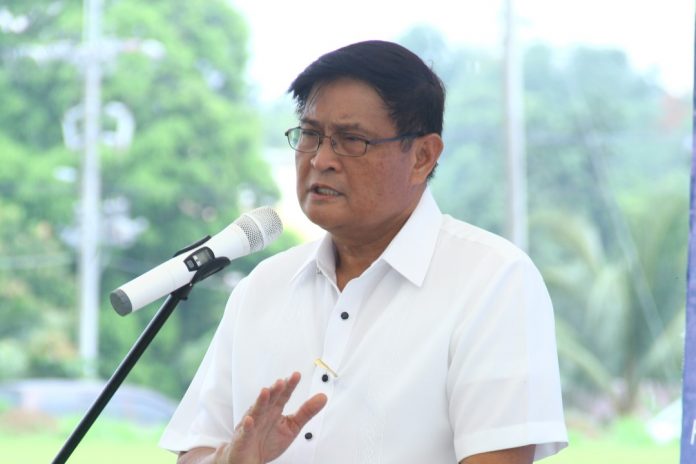
MANILA – The Metropolitan Waterworks and Sewerage System (MWSS) said it is continuously fine-tuning its disaster preparedness program after the earthquake that jolted Luzon last month.
In a statement, MWSS administrator Reynaldo Velasco underscored the need to closely collaborate with all stakeholders, especially with its concessionaires Manila Water and Maynilad.
He said that the water shortage experienced in the East Zone last March demonstrated how teamwork can address a crisis.
“Cross-border sharing between Manila Water and Maynilad was among the short-term solutions to the water crisis,” Velasco said.
“The water crisis also resulted in the activation of deep wells to augment dwindling water supply,” he added.
The water shortage, however, continues in both zones serviced by the two companies.
Water plan in case of quake
Velasco also stressed the need for a water security plan to cushion the effects of an earthquake that could potentially damage Angat Dam, the primary water source for Metro Manila and neighboring provinces of Rizal and Cavite.
“The need for a water security plan is not only a concern of the Philippines. It is also a concern of other nations. But, more so for countries like the Philippines with growth centers like Metro Manila that greatly depend on one water source,” he said.
In a joint meeting between the National Disaster Risk Reduction and Management Council and Earthquake Resiliency Team for the Water Sector, a total of 109 existing deep wells operated by Manila Water and Maynilad were identified that could be re-activated in case of disaster.
To ensure water potability, regular maintenance check-ups must be conducted, the MWSS added.
A draft Memorandum of Agreement between MWSS through the concessionaires and the National Water Resources Board (NWRB) mandates the periodic monitoring of water quality.
In case of a disaster, there are nine available mobile water treatment plants, 43 static water tanks, and 79 mobile water tankers that can be deployed. There are also 64 water reservoirs with a total capacity of 1,222 million liters per day (MLD).
The Maynilad facility reservoirs have a 711-MLD capacity while those of Manila Water hold 511 MLD. MWSS said it has also crafted a water security roadmap that will provide potable and sustainable water supply in the next 5, 10 and even 50 years, at an increase of at least 1,518 MLD by 2022.
Projects
Being fast-tracked under the new water security roadmap are the 150-MLD Putatan (2019); the 100-MLD Cardona (2019); the 188-MLD Sumag (2020); the 50-MLD Rizal Wellfield (2020); the 80-MLD Calawis Wawa (2021); the 100-MLD Putatan 3 (2022); and the 250-MLD Lower Ipo projects.
Also in the plan is the controversial, 600-MLD Kaliwa Dam project whose implementation has begun in 2017 and is expected to be completed in 2023, the MWSS said.
Medium-term water source projects from 2023 to 2027 are the 420-MLD Wawa Dam; the 250-MLD East Bay; the 350-MLD Bayabas Dam; the 550-MLD Angat Norzagaray Phase 2; the 250-MLD East Bay; the 750-MLD Sierra Madre; and the 1,800-MLD Kanan River Phase 1.
To complement the New Water Security Roadmap (2019-2022), MWSS emphasized the need to fast-track the completion of Aqueduct 6 and Tunnel 4. Both are expected to be operationalized by January 2020.
MWSS said it also expects to complete, by June 2022, Aqueduct 7 and Tunnel 5 which are now on stream to provide another 1,600 MLD to flow towards La Mesa reservoir. The completion of these aqueducts and tunnel system will optimize the flow of excess water from Angat to La Mesa Dam.
Meanwhile, the Angat Dam and Dyke Strengthening Project has been concluded, described as a step towards ensuring the structural integrity of the dam. Immediately after the earthquake, the MWSS dispatched its team of engineers to assess the Angat, Ipo and La Mesa dams.
“[W]e have to be aggressive in developing new water sources,” Velasco said. (GMA News)



